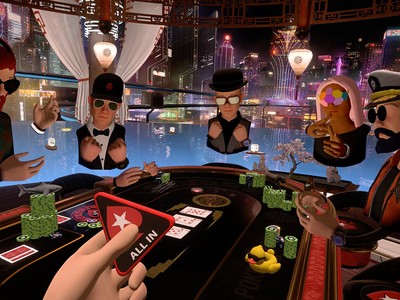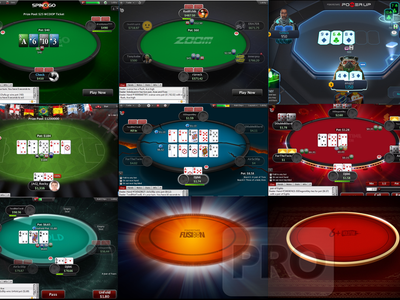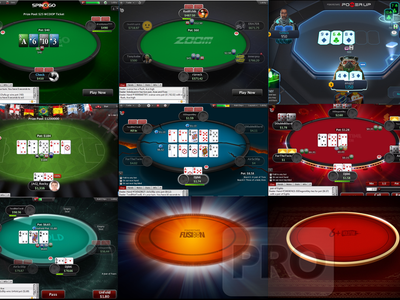For the first time in a long time, the topic of prop players in poker came up on social media thanks to the following tweet from Dara O’Kearney.
O’Kearney (or Doke as he’s called), a professional poker player, podcaster, and one of the best player-bloggers in poker, was simply wondering aloud why the use of prop players has fallen out of fashion in the poker world.
Doke is correct. Prop players are no longer as widespread as they once were. However, they are still a thing, as I know of at least one New Jersey online poker site that used props. Basically, they’re not extinct, but they’re definitely on the endangered or protected list.
That’s particularly true in the online poker sphere, which borrowed the practice of using prop players from brick & mortar cardrooms.
Props in the early days of online poker
Props were very much a thing in the early days of online poker when new sites routinely employed props, or in some cases, simply bankrolled a bunch of players. More often than not these bankrolled players (not to be confused with props) were friends who were poker pros, who were supposed to “give action” and create juicy games with that money.
As years went on, hundreds of sites turned into dozens, and low-liquidity rooms partnered to form networks, the need for props diminished. It still exists, but it’s not at the level it was in 2004/2005.
Doke also wondered if being an online prop was all he originally thought it was cracked up to be.
Before I go any further, I should probably explain what a prop player is, and the differences between propping in the online and brick & mortar poker worlds.
Brick & mortar props
Brick & mortar props are more or less house players.
Props are paid money to do what they would be doing anyway: play poker. Of course, there are a few stipulations.
Yes, props receive some type of compensation from the cardroom, usually in the form of an hourly wage, but they have to play on their own bankroll. The cardroom doesn’t buy them into the games.
Props are also at the beck and call of the cardroom, and are used to fill seats in short-handed games that might otherwise break or help get new games started. As such, props are often moved from good games with long waitlists, to other, less desirable tables.
Put it all together and you start to get a clear picture of the typical brick & mortar prop player.
Props tend to be slight losers to small winners, with their propping pay either keeping them in action (it’s not uncommon for a prop to be out of action the last couple days before their prop check is cut each week) or allowing them to scrape out a living playing poker.
A brick & mortar prop is not a glamorous life and has a good chance of trapping the player in a bad cycle where they scrape by week-to-week, constantly depending on that prop check.
Online prop players are a little different
Online propping is a different animal. It’s also something I have some firsthand experience with.
The biggest difference being the larger upside of propping online, due to far fewer demands and the ability to multi-table. As such, you don’t simply get “nits” as online props.
As an online prop player, you can log on as often as you like, and are usually given a basic set of parameters you must abide by. The typical prop agreement is you start games or sit at short-handed tables, and leave the table when a certain number of players are seated.
Another big difference is online props are usually compensated with a rakeback deal, often 100 percent, which is a nice bonus for a player tasked with playing a lot of heads-up and shorthanded games.
The nature of online poker allowed players to prop at one site and still play their normal games at another. In a brick & mortar cardroom props didn’t have this luxury, which is why live propping tends to attract nitty players.
My experience as a prop player
For example, I used to prop at a low-traffic site that typically had a few No Limit and Limit Hold’em games running. Instead of starting new Hold’em games (which is what most props would do) I would sit at the Omaha 8 and Stud 8 tables and wait for a taker.
While I was waiting I would play at partypoker, PokerStars or some other high traffic site.
When someone did sit (usually someone five deep on a Hold’em waiting list that was impatient) they didn’t stand a chance. Typically I’d play heads-up for a bit and the person would leave and I’d wait for another taker. But every now and then a short-handed game would get going and last several hours.
Because of my 100 percent rakeback (my memory is a little fuzzy on this, so it might have been over 100 percent), playing heads-up split pot games wasn’t costly. I could hammer one-way locks without losing money to the rake, and be called an idiot by opponents.
I’m not sure how online propping works in modern poker, but I suspect it’s still similar. However, I also suspect that the opportunities — people completely unfamiliar with non-Hold’em games or short-handed play — that were present in the early days of online poker no longer exist.
What happened to propping and should it be resurrected?
The big question is this: Is there a place for props in modern poker?
The answer is quintessential poker: It depends.
Props serve a very narrow purpose. The only benefit they bring is hiding liquidity deficiencies. Sites with solid traffic numbers have little use for prop players.
On the other hand, a new site might find employing prop players extremely beneficial.
Of course, the pool of players that tends to be interested in propping (break-even types and small winners) is shrinking as fast as the soft online poker games I used to exploit more than a decade ago.
The idea of sitting around at a low traffic site waiting for players isn’t going to pique the interest of a solid winner (playing a loose-aggressive style) that can beat the games at big sites.
Fifteen years ago it made sense to wait for random players to show up. They were easy pickings. That’s not the case anymore, especially in an era where people specialize in heads-up and short-handed play.
As such, most modern props resemble the traditional brick & mortar prop. Meaning, they’re nitty. And nits on a rakeback deal based on contributed rake aren’t going to make much money propping, so you’re left with the nittiest of the nits who are willing to prop for peanuts.
That dynamic has the potential to be more harmful than low traffic numbers. A site with low traffic numbers is off-putting enough, couple it with rock garden games and you have the kiss of death for a poker room.
Bottom line
A poker room thinking about using prop players needs to carefully weigh the pros and cons. As important as traffic is, it’s not the only thing that’s important.
There are some unique situations where using props makes sense, but by and large it’s a practice from a bygone era of poker.
As I mentioned on Twitter, I was probably bad for gamed because I beat bad players so fast, and as Barry Carter quipped, why use props when people will swarm to a table of a fish:
The post Modern Poker Doesn’t Have Much Of A Use For Prop Players appeared first on .











